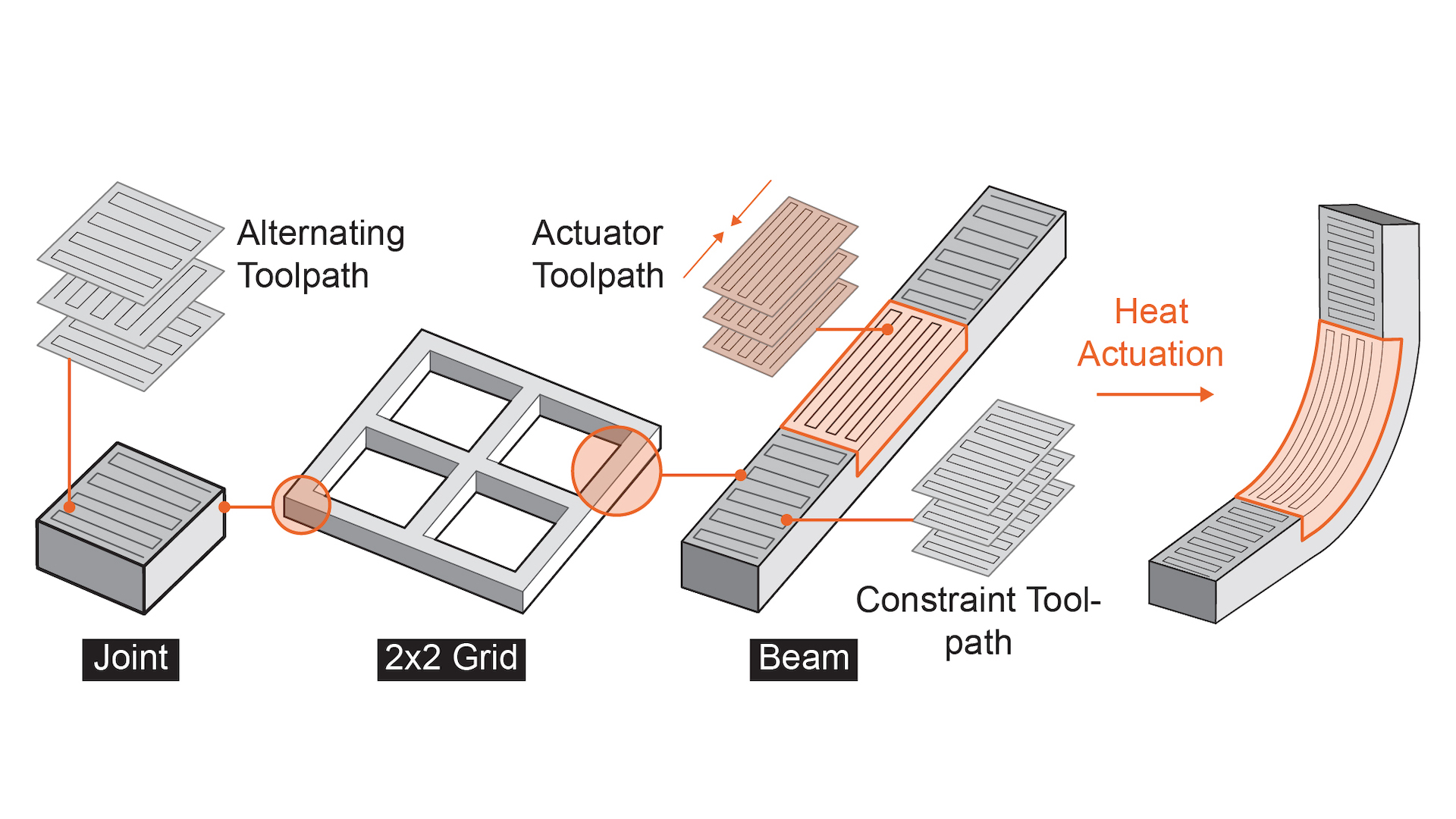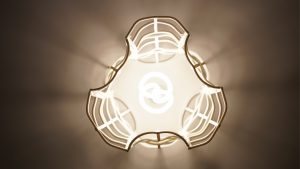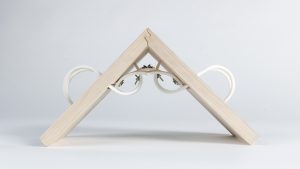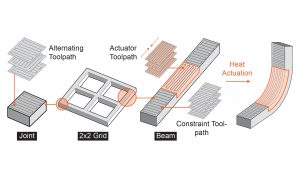
AI-assisted Morphing Material Design: Behind the Scenes of SimuLearn
Now, imagine designing the morphing material for this lampshade with AI so your CAD tool simulates and evaluates your designs in near real-time and even actively suggests designs that satisfy your specified material behavior.
Well, part of the visions above has already materialized: 4D printing, the process of giving 3D structures the ability to change shape or form over time, is the forte of the Morphing Matter Lab at Carnegie Mellon University headed by professor Lining Yao. Last week at ACM Symposium on User Interface Software and Technology (UIST) 2020, the lab has released their latest project called SimuLearn. A fast and accurate simulator aims to support morphing material designs and workflows – making trudges towards the vision of human-AI collaborations in the field of morphing material CAD tools.
Data Aided Design had the pleasure of speaking with the brains behind this exciting new project. A special thank you to Humphrey Yang and professor Lining Yao for spending some time with us!

Could you describe the SimuLearn project for us please?
SimuLearn is a data-driven, fast and accurate simulation technique for transformative morphing materials. Conventional simulation methods often have to make tradeoffs between speed or accuracy, but both are equally important in morphing materials design processes. That is, the simulator should be sufficiently accurate to inform effective design decisions and fast enough to afford real-time interactions. To achieve this, we use slow but accurate simulators to generate datasets for training machine learning models, such that the trained model can perform identical simulations at much faster speeds. We also develop assistive design tools around this fast and accurate simulator – in addition to allowing users to preview transformations in real-time, the tool is also capable of iterating and optimizing designs with trial-and-error based on user-specified goals. Leveraging its speed, when users get stuck during the design process, the design tool can also make real-time suggestions to help users achieve what they want.

What do you want to explore or achieve most in this project? What is the vision behind the project? Is the use of data part of that?
Our goal was to make morphing materials design tools more assistive and informative during computer-aided design processes. Unlike conventional design practices that deal with static objects, morphing materials are transformative and actuatable, and these factors are often not captured accurately by conventional design tools. As a result, designers have to resort to physical prototyping even at the early stages of design processes, making it time-consuming to carry out a project. To overcome this issue, we take inspiration from the human mind’s ability that, given sufficient observations of similar events, we would eventually become capable of predicting what would happen next in an instant based on what we see. This process can be approximated by using machine learning as an analogy of the human mind and a dataset of morphing materials transformations as the observations. On the other hand, fast and accurate simulators are also experts in the targeted domain, thus can be more assistive and informative to both novice and expert users. In the future, we are hoping that with SimuLearn as a backend engine, morphing materials design tools would become the users’ collaborative partners as opposed to being passive tools.
How was data used in this project’s development? What software, method (or algorithms) were used while working on this project?
Data collection makes up more than 50% of this project. We used an engineering software tool, Abaqus (i.e., a finite element analysis software), to gather the raw data we needed and developed our own pipeline for extracting useful information from these data to arrive at a distilled dataset. The dataset was then used to train a Graph convolutional network (GCN) to perform simulations. We chose GCN as opposed to other model architectures because it allows us to represent an object in an object-oriented manner (i.e., representing a design as an aggregation of actuators), which is identical to how human designers reason about morphing materials artifacts. Finally, the design tools were implemented as a script in the CAD software Rhinoceros 3D and Grasshopper, and the designs can be fabricated with an off-the-shelf 3D printers.

How was it working with these data and tools you mentioned above? Were there any obstacles you faced while working on your project? How did you go about it?
There are several challenges associated with training a data-driven simulator. First, as a single trail of simulation goes on, the errors would get accumulated and compounded at each succeeding step, leading to simulation divergence. To overcome this issue, during model training, we added noise to the dataset to mimic the errors and the trained simulator became much more resilient to iterative errors. On the other hand, curating a dataset that covers the design space is also challenging, and the only way to approach this is by closely working with a designer to understand their needs – what ranges of parameters are favored and what are less visited. This knowledge can be used to prioritize data collection efforts. Finally, since SimuLearn involves using accurate but slow simulators for collecting data, it is essentially frontloading computational time to the development phase. This requires access to vast computational resources, and we used the Pittsburgh Supercomputing Center to obtain our datasets.









